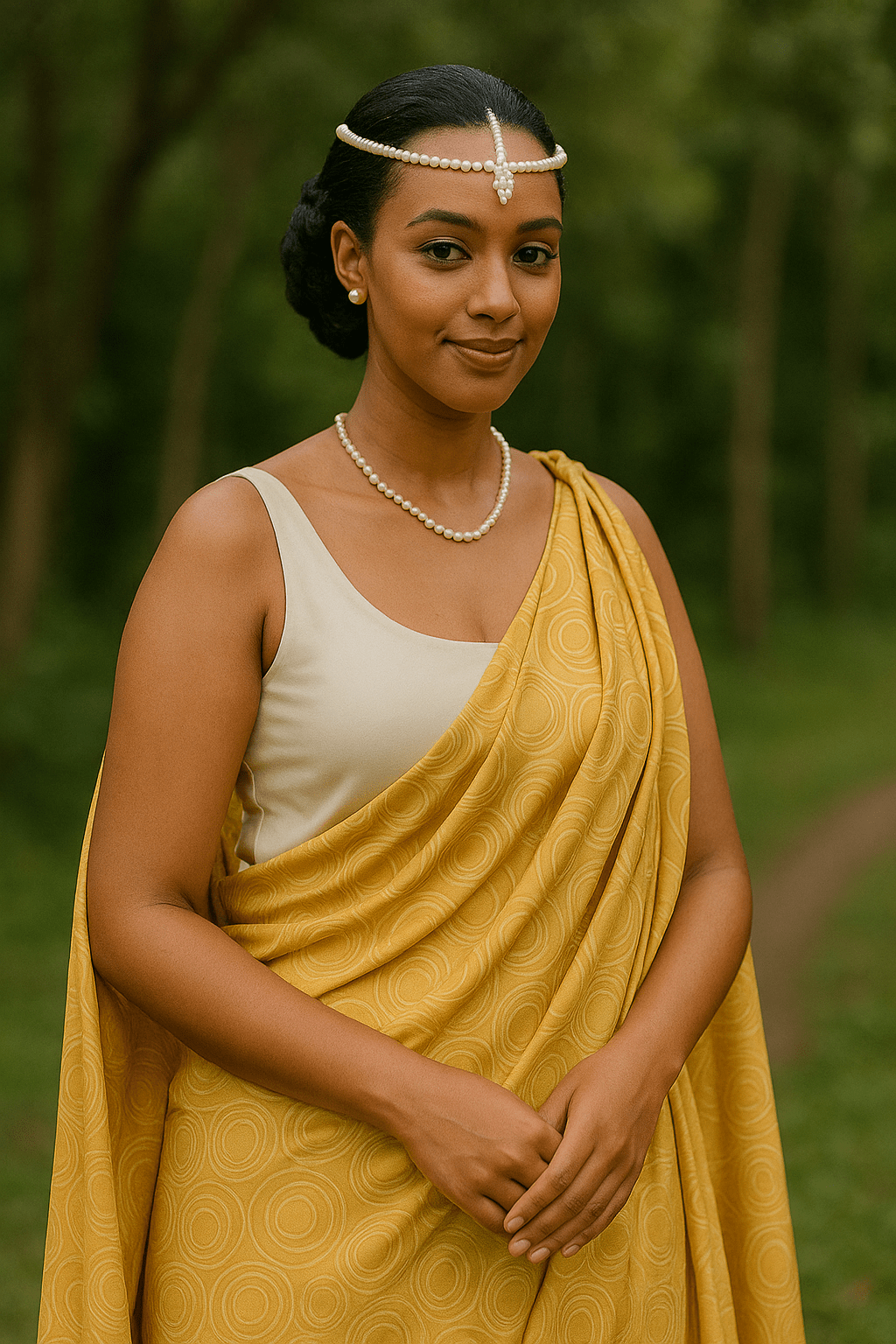
Decoding the Mushanana: The Significance and Styles of Rwanda’s Traditional Wedding Attire
In the tapestry of Rwandan culture, few garments speak as eloquently of grace, tradition, and celebration as The Mushanana. This iconic attire, predominantly worn by women, takes center stage during weddings, transforming the occasion into a vibrant display of cultural heritage and feminine elegance. To witness a Rwandan wedding is to witness the beauty and significance woven into every fold and drape of the mushanana.
More than just a beautiful outfit, the mushanana is a powerful symbol, deeply rooted in Rwandan history and carrying layers of meaning. It represents cultural identity, respect for tradition, and the beauty of Rwandan womanhood. Understanding its components and variations unveils a fascinating glimpse into the heart of Rwandan culture.
The Anatomy of Elegance: Understanding the Mushanana’s Components
The mushanana is traditionally composed of three key pieces:
- The Umwitero: This is a long piece of cloth, often rectangular, that is draped over one shoulder and across the chest, gathered and tied at the opposite hip. The way it is draped can vary slightly, adding a personal touch to the overall look.
- The Kabutura: This is a fitted or slightly loose-fitting blouse, typically made of cotton or a complementary fabric. The style and embellishments of the kabutura can range from simple and elegant to intricately embroidered or adorned with lace.
- The Umukenyero: This is a long, wrapped skirt that forms the base of the attire. It is usually made from a flowing fabric that complements the umwitero and kabutura, creating a harmonious and graceful silhouette.
The Language of Fabric and Color:
The fabrics chosen for the mushanana are far from arbitrary. Historically, barkcloth was used, but with the introduction of trade, luxurious silks and other fine materials became highly prized, particularly for special occasions like weddings. Today, you’ll see mushanana crafted from a variety of fabrics, including silk, satin, and even high-quality cotton blends.
Color also plays a significant role. While there aren’t strict rules, certain colors are often associated with celebration and prosperity. Rich jewel tones like deep blues, vibrant greens, and radiant purples are common choices for wedding mushanana. The bride might choose a color that holds personal significance or aligns with the overall wedding theme.
Styles and Variations: A Reflection of Individuality and Evolution
While the core components of the mushanana remain consistent, there’s a beautiful spectrum of styles and variations that reflect individual taste, regional influences, and evolving fashion trends.
- Traditional Silk Mushanana: This remains a timeless and highly esteemed choice for brides and other important female guests. The luxurious drape and subtle sheen of silk exude elegance and sophistication.
- Embroidered and Adorned Mushanana: Intricate embroidery, often featuring traditional Rwandan motifs or floral patterns, adds a personal and artistic touch to the attire. Delicate lace detailing on the kabutura or along the edges of the umwitero is also a popular embellishment.
- Matching Family Mushanana: It’s a common and visually stunning tradition for the bride’s female relatives, including her mother, sisters, and aunts, to wear mushanana in coordinating colors and fabrics. This visually reinforces the unity and collective joy of the occasion.
- Modern Interpretations: Contemporary Rwandan designers are also bringing innovative twists to the traditional mushanana. This might involve incorporating modern cuts for the kabutura, experimenting with different fabric textures, or adding subtle Western-inspired details while still honoring the core essence of the garment.
The Bride’s Mushanana: A Symbol of Transition and Beauty
For the bride, her mushanana is particularly significant. It is often the most elaborate and exquisitely crafted attire of the day, symbolizing her transition into a new chapter of her life. The choice of fabric, color, and embellishments often reflects her personal style and the importance of the occasion.
Beyond the Wedding Day:
While the mushanana is most prominently featured during weddings, it is also worn for other significant cultural events, ceremonies, and even formal occasions. It serves as a constant visual reminder of Rwandan heritage and pride.
Decoding the mushanana is like unlocking a chapter in Rwanda’s rich cultural narrative. It is a garment that speaks of history, elegance, and the enduring spirit of Rwandan womanhood. As you witness the flowing fabrics and vibrant colors at a Rwandan wedding, remember that you are not just seeing beautiful attire, but a tangible expression of a proud and cherished tradition. The mushanana is a symbol that continues to weave its way through generations, a timeless embodiment of Rwandan identity and grace.
Sources and related content